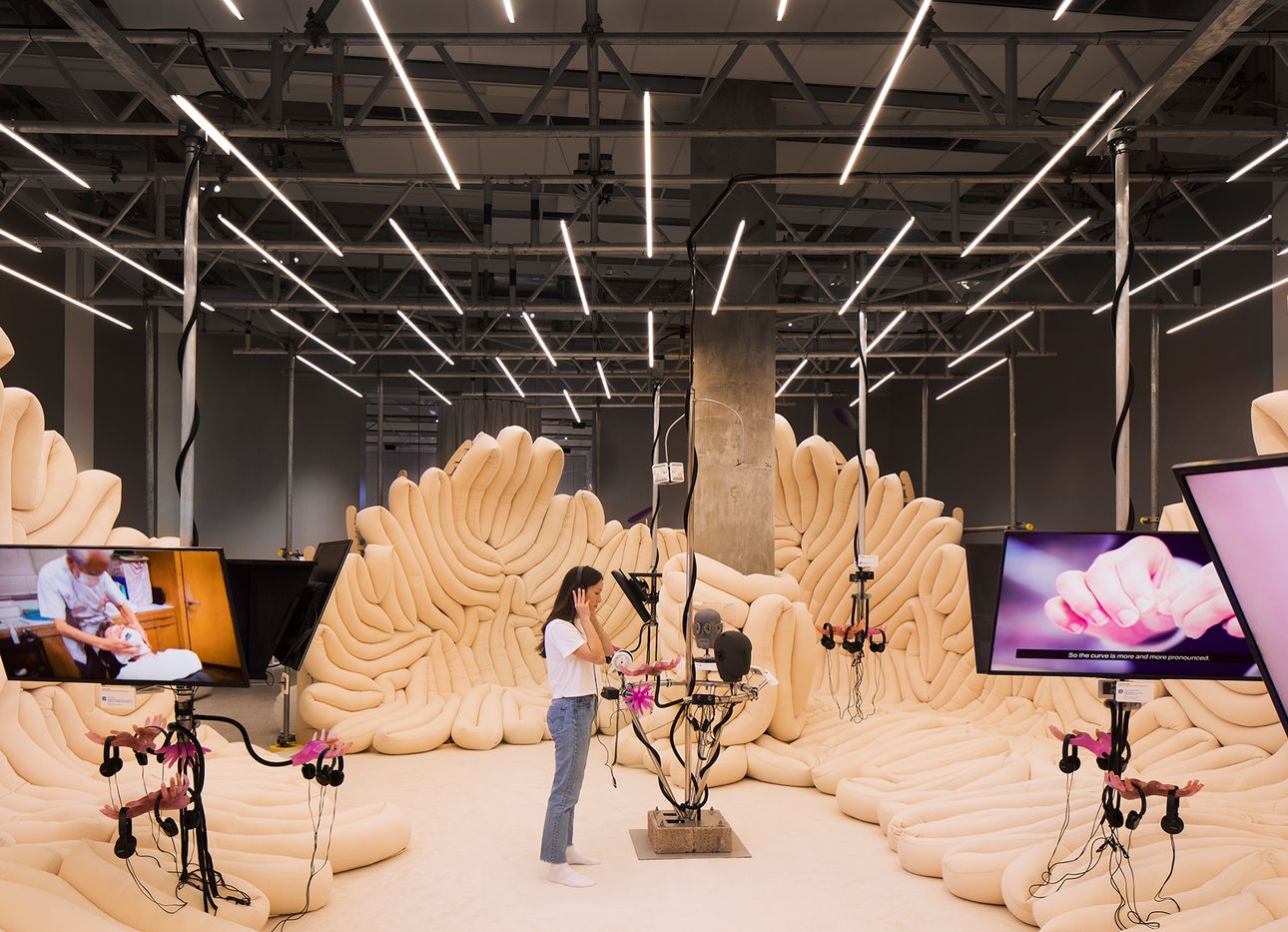
Experiencing the Satisfying Sensations of A.S.M.R. in Real Life
A disembodied rubber tongue juts from a brass contraption upon a wall that links it with motors, tubes, and metal. Artificial saliva running down its painstakingly rendered elastic taste buds, the organ wriggles this way and that—a mute reminder to the eye of the swanlike exertion lurking in the mouth. This tongue is the work of Swedish artist Tobias Bradford, titled “That Feeling/Immeasurable Thirst” (2021), and if it sounds in any way appealing, you’re likely the right audience for “Weird Sensation Feels Good: The World of A.S.M.R.” (through October 16), a new exhibition at London’s Design Museum.
The concept of A.S.M.R., short for “autonomous sensory meridian response,” emerged from the corners of the internet. Videos of softly mumbled nothings, random clacks on a keyboard, paper crinkling, and other quasi-ambient sensations began flooding YouTube around the start of the 2010s, building an audience of those who found these soundscapes satisfying in some soothing or tingly way that tended to vary from person to person, if experienced at all.
Organized in collaboration with ArkDes, the Swedish Centre for Architecture and Design, “Weird Sensation” goes beyond the purview of A.S.M.R.’s largely aural beginnings by exploring the visual and tactile components in the world of the oddly satisfying. The exhibition begins with several videos demonstrating visual A.S.M.R. (think abstracted takes on the seamless order of a Rube Goldberg machine, or an industrial bread slicer at work) before continuing on to a room dedicated to the work of posthumously dubbed proto-A.S.M.R.tist, Bob Ross. Gen Z’s rediscovery of the joys of The Joy of Painting hinged not so much on an interest to improve their line as on the disarming cadence of Ross’s voice, the soft scraps of his brushes on a canvas, and the breezy spread of order in the swift assemblage of a landscape. This show is interested in whatever can—intended or not—bring about such nuggets of bliss.
The many forms of A.S.M.R. are on full display. Perhaps it’s the sounds of pinching and picking at a phone case made of artificial skin by designer and researcher Marc Teyssier. Maybe it’s putting on a headset and listening to brushes sway against a microphone in sound designer Julie Rose Bower’s sensory playground. The exhibit is very much of the attitude that A.S.M.R. doesn’t exist as a strictly defined medium, and takes the view of whatever does it, does it—presenting a kitchen sink of stimuli that may resonate or repulse. The effect is akin to a more visceral version of what would happen if you put a gaggle of theory-free patrons into an abstract expressionism gallery.
The centerpiece of it all is a central arena inhabited by enveloping plush sofas that look like a cross between sausages, hands, and folds of brain tissue. Monitors and headphones abound for attendees to sink in and watch everything from a rug being squeezed through a narrow corridor, tiny dogs being groomed in South Korea, and Björk, circa 1988, dissecting the parts of a television set in the sharp inflections of her Icelandic accent.
Weird for certain, and satisfying maybe, the exhibition at the very least offers the A.S.M.R. neophyte a memorable tour of the subculture’s many alleys, and the veteran a chance to see their world blown well beyond the standard scale of the laptop screen. Whether one is intrigued or not by the rise of the phenomenon, in a culture with a penchant for the quick and the overwhelming, a space celebrating the slow, simple, and, perhaps, soothing doesn’t seem so bad.